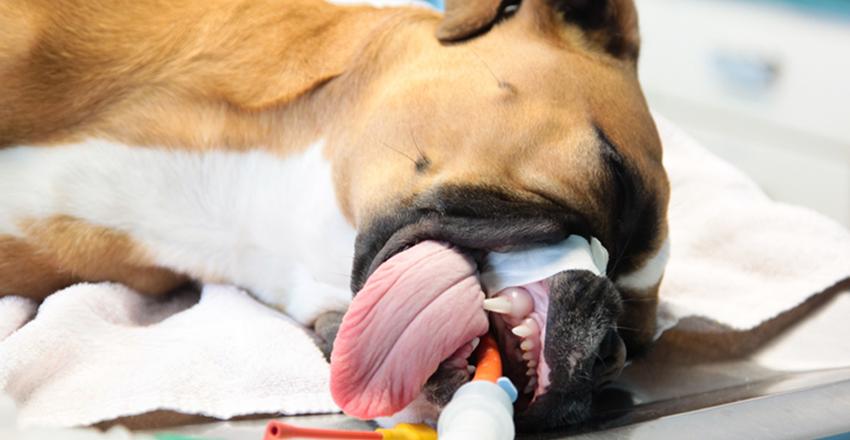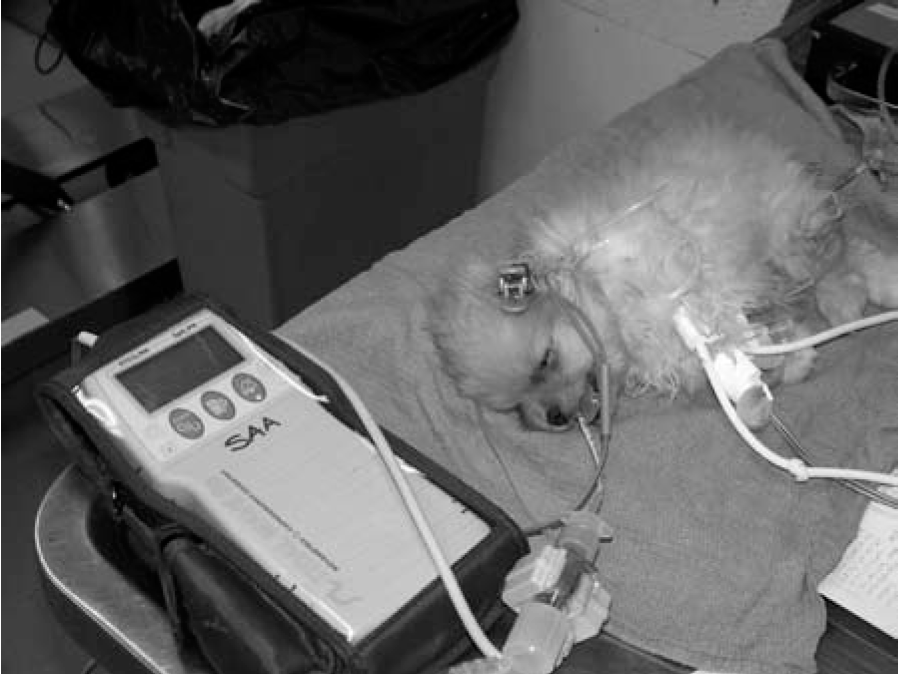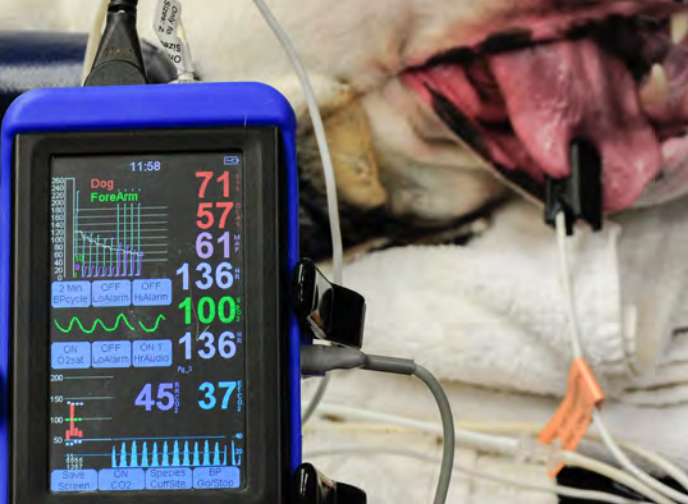normal end tidal co2 dog
It measures inspired and expired carbon dioxide CO 2 throughout the whole respiratory cycle using infrared spectroscopy. This difference is usually not clinically significant though may increase in patients with respiratory andor circulatory compromise.
Ganong 1995 or partial pressure of 53 of normal air at sea level.

. Most anesthetics are respiratory depressants and end-tidal CO2 allows early detection of respiratory impairment so appropriate intervention can occur before the problem becomes life threatening. The CO 2 waveform is a valuable tool for detecting leaks in the anesthetic system rebreathing of CO 2. However an excess of carbon dioxide in the bloodstream can lead to an abnormal condition causing symptoms ranging from dizziness to convulsions.
Ventilation is defined by PaCO 2 with a normal range of 35 - 45 mm Hg. ETCO 2 tends to underestimate PaCO 2 by 2 - 5 mm Hg. For a person with normal lungs the difference between end tidal and Paco2 can vary between 5-8mmHg depending on the book your reading.
Throughout the breath cycle. Since problems with lungs are not common and gas exchange between alveoli and the blood is swift and effective. This may result from such ventilatory problems as high mean airway pressure or inadequate exhalation time resulting in overdistention or from such circulatory problems as.
The end-tidal carbon dioxide tension PetCO2 measured after a single large tidal-volume breath 15 mlkg body weight was compared to simultaneous measurements of PaCO2 in 6 dogs with normal lungs who were receiving high-frequency jet ventilation HFJV. The normal alveolar CO 2 pressure is about 40 mm Hg pressure Guyton 1984. Two private specialty referral hospitals.
The level of CO 2 gradually rises during exhalation showing an approximate equalization with the CO 2 value in alveoli in the lungs hence the phrase end-tidal. End-tidal clearance must be evaluated in the context of the patients perfusion status. Left untreated a state of hypercapnia can lead to death.
Normal range is 35-45mmHg and roughly correlates with the partial pressure of CO2 in arterial blood remember that PaCO2 is usually slightly higher than ETCO2 by 2-5mmHg. We know that elevated ETCO2 hypercapnia occurs during hypoventilation and a decrease in ETCO2 hypocapnia occurs with hyperventilation. End-tidal carbon dioxide levels correlate fairly well with arterial carbon dioxide PaCO 2 in birds and mammals.
Normal arterial blood pressure values for dogs and cats are indicated in Table 111. ETCO 2 can be of value in the assessment of ventilation. Under most circumstances healthy pet no chest surgery end-tidal CO 2 is typically 5 10 mmHg less than arterial CO 2.
End-tidal CO 2 monitoring is a non-invasive means of estimating arterial CO 2. Carbon dioxide tension PaCO 2. The normal amount of carbon dixide in the arterial blood is 35-45 mm Hg a measurable unit of pressure.
End-tidal carbon dioxide measurement allows non-invasive measurement of the ability of the respiratory system to excrete carbon dioxide usually indicative of respiratory function. So the short answer is you are right about the ranges 35-45 but that is for actual PaCo2 drawn from an ABG. There was an excellent linear correlation between PetCO2 and the PaCO2 over the.
Dead-space ventilation results in ventilated alveoli with insufficient perfusion which leads to low ETco 2. The measurement of end-tidal carbon dioxide ETCO 2 allows the continuous monitoring of the adequacy of ventilation and circulation in the anaesthetised patient. As stated before end tidal is slightly different.
Capnography Ii What Happened To The Alfaxan Anaesthetic Injection

End Tidal Carbon Dioxide Tension Pet Co 2 In Normal Individuals Over Download Table

The Abcs Of Veterinary Dentistry V Is For Ventilation Monitoring

Pdf Capnography In Dogs Semantic Scholar

The Practitioner S Acid Base Primer Obtaining Interpreting Blood Gases Today S Veterinary Practice

Concurrent Use Of Pulse Oximetry Via A Tongue Probe And Capnometry In An Anesthetized Dog Hemoglobin Saturatio Vet Medicine Vet Tech School Vet Tech Student

Capnography In Veterinary Medicine Chapter 28 Capnography

Anesthetic Monitoring Devices To Use And What The Results Mean Today S Veterinary Practice

Veterinary Anesthesia Monitoring Cheat Sheet And Faqs

Why Monitor End Tidal Carbon Dioxide Rwd Life Science

The Abcs Of Veterinary Dentistry V Is For Ventilation Monitoring

Anesthetic Monitoring Devices To Use And What The Results Mean Today S Veterinary Practice

Pdf Capnography In Dogs Semantic Scholar
Did You Know Hypercapnia Is Synonymous With Hypoventilation

Pdf Capnography In Dogs Semantic Scholar

Cardiovascular Monitoring Of The Canine Gastric Dilatation Volvulus Patient The Veterinary Nurse
Riding The Wave Of Capnography Understanding Etco2 Vetbloom Blog
